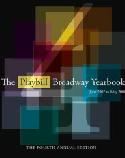SITE GUIDE
SEARCH
REVIEWS
REVIEW ARCHIVES
ADVERTISING AT CURTAINUP
FEATURES
NEWS
Etcetera and
Short Term Listings
LISTINGS
Broadway
Off-Broadway
NYC Restaurants
BOOKS and CDs
OTHER PLACES
Berkshires
London
California
New Jersey
Philadelphia
Elsewhere
QUOTES
TKTS
PLAYWRIGHTS' ALBUMS
LETTERS TO EDITOR
FILM
LINKS
MISCELLANEOUS
Free Updates
Masthead
A CurtainUp Review
Vieux Carré
By Elyse Sommer
| I don't want to catch your cold.—The Writer to Nightingale the artist who's in denial about his deadly tuberculous. And I don't want to catch yours, which is a cold in your heart; that's a lot more fatal to a boy with literary pretensions.—Nightingale to The Writer |

Sean McNall as The Writer & George Morfogen as Nightingale in Vieux Carrë
|
Anyone checking out Curtainup's backgrounder on Tennessee Williams will see that other adventurous theater professionals have staged some of his more obscure work. Naturally, the more iconic plays are most popular since they offer the playwright's fans an opportunity to see his characters live once again through new interpreters, and also let young audiences experience the lyrical language on stage rather than on the page. However, besides the works most closely associated with Williams, the poet of twentieth century drana, there are unlisted, newly discovered gems like Not About Nightingales (review of Trevor Nunn's 1999 production) as well as lovingly staged revivals of under-appreciated plays like Eccentricities of a Nightingale (Review of that successful reincarnation).
Williams pulled Vieux Carré out of his trunk at a time when his career and personal life were at a low ebb. He polished up the notes written while he actually lived at that boardinghouse in the famous garden district and the more fully realized play did get a Broadway production in 1977. Alas, it did little to turn the tide for the playwright's floundering career. Clive Barnes, the then New York Times drama critic recognized "the murmurings of genius" but didn't think they added up to a major statement. A New Orleans used the local dialect for his sum-up: "Da chicory's on da stove, da cockroaches are on da walls, and all da characters are onda de-cline.". Since the quickly aborted run (1 preview, 5 performances) yielded fewer revivals than the fingers on one hand, curiosity about a possible new relevancy is sure to send Williams buffs to the Pearl to see Vieux Carré while they can.
Vieux Carré is often tagged as a sequel to The Glass Menagerie. Understandably so, since both plays have a narrator who also participates in the story. Tom, the Menagerie narrator looks to the future away from his mother and sister, Vieux Carre's narrator (Sean McNall), identified only as The Writer, is looking back at the ghosts in his house of memories. Besides his own youthful self who's left home but is still trying to find his literary voice and get in touch with his own sexual identiy, there are the denizens of the boarding house in the fabled French quarter who are dying— physically and spiritually, or both: Mrs. Wire (Carol Schultz), the landlady on a rampage against the immorality all around her who sleeps on a cot in the hall. . .Nightingale (George Morfogen), a tubercular, aggressively homosexual painter. . . Jane (Rachel Botchan ), a young New York fashion designer who's on the run from a deadly blood disease and is sharing her room with Tye (Joseph Collins), a sexy junky who works in a strip joint. . . Mary Maude (Beth Dixon) and Miss Carrie (Pamela Payton-Wright), two penniless old women who pretend the bags of food they bring home are the leftovers of restaurant meals rather than scavenged on the street.
Clearly, physical ailments are as abundant as hope and joy is not. Even the narrator is afflicted. His despair comes from an as yet non-starting career; his ailment is a cataract in one eye, an obvious metaphor for his inability to, at this point, see himself and others clearly.
Besides The Writer's obvious connection to Tom of The Glass Menagerie, there are bits and pieces of Streetcar's Blanche DuBois in Mrs. Wire and the impoverished, in-denial Maude and Carrie; also of Stella and Stanley in Jane and Tye. No wonder the narrator tells Mrs. Wire: "God, but I was ignorant when I came here! This place has been a--I ought to pay you-- tuition. . ."
But while Helmer Austin Pendleton has gone out of his way to recreate the atmosphere of the boarding house where Williams stayed just long enough to absorb this mother lode of inspiration, his directorial ideas don't always work. I can appreciate why he chose to have the various rooms in the boarding house on one level and without any visible dividers to differentiate between the various rooms. Having the characters move upstage when not part of the action so that the one center stage bedroom serves as Mrs. Wire's, Jane's, Nightingale's and the narrator's room fits the dreamy atmosphere of the mature narrator evoking memories from long ago. I suppose Pendleton's enclosing that single set with a doorless back, so that the actors keep entering and exiting via the two aisles also makes sense in terms of emphasizing the connection between the shabby, dead-to-life interior and the life pulsing outside. However, without a trace of anything to suggest New Orleans (a projection of the street on that bare enclosure might have helped) there's a lack of atmosphere and, all that up and down the aisle movement tends to be distracting to the point of annoyance.
The cast too is uneven. Sean McNall, one of the Pearl's best resident actors, doesn't seem entirely at ease in the narrator's role. His best scene is when he confronts the always reliable George Morfogen's Nightingale and tells him to stop calling his tuberculosis astma, flu or a bad cold but to instead "face the facts, deal with them." This, of course, addresses Williams' own need to face his demons and may remind viewers of a character from another play— the AIDs denying Roy Cohen in Tony Kushner in Angels in America.
Rachel Botchan is excellent as Jane. Her character gets some of Williams' most evocative lines— as when she compares the contents of the letter the New York clinic sent her about her blood count to one of the rejection slips the Writer has been collecting ("Let's just say it was a sort of personal, signed rejection slip too."). When she explains her desperate decision to meet the stranger coming to take her away with "Who have I got to appeal to except God, whose phone 's disconnected, or this. . .provincial. . .protector" it's Blanche having to look to "the kindness of strangers."
You can also hear Stanley Kowalski's famous cry for Stella in Joseph Collins' Tye. Unfortunately, Pendleton's directing him to get naked comes off as a forced attempt to bring the play into the nudity-permissive present—especially since Botchan's Jane partners that nude scene with her underclothes firmly in place.
Perhaps a more atmospheric set and uniformly outstanding performances might make this new incarnation of Vieux Carré less of an interesting artefact with bursts of Williams' wonderful lyricism. Those bursts of lyricism do make this more than just a rambling soap opera, but even the best passages aren't enough to elevate the play into the canon of Tennessee Williams classics.
This production has a special historical significance for the Pearl in that it marks the company's last play to be staged at it's long time East Village Home and the end of founder Shepard Sobel's tenure as the Pearl's artistic director. But the Pearl WILL go on, at it's new uptown home, City Center's Stage II.
For more about Tennessee Williams and links to other of his plays reviewed at Curtainup, see our Tennessee Williams backgrounder .
|
By Tennessee Williams Directed by Austin Pendleton Cast: Cast: Rachel Botchan (Jane), Sean McNall (The Writer), Carol Schultz (Mrs. Wire); and guest artists Beth Dixon (Mary), Joseph Collins (Tye), George Morfogen (Nightingale), Pamela Payton-Wright (Carrie), Christian Pedersen (Sky), Claudia Robinson (Nursie). Scenic design by Harry Feiner Costume design by Barbara A. Bell Lighting design by Stephen Petrilli Sound design by Jane Shaw Stage manager: Dale Smallwood Dramaturge: Kate Farrington The Pearl at Theatre 80, 80 St. Mark's Place at 1st Avenue. From 5/12/09; opening 5/27/09; closing 6/14/09. Tuesday at 7PM; Wednesday at 2PM; Thursday, Friday, Saturday at 8PM; Saturday and Sunday at 2PM. Ticket Prices: $45 for performances on Tuesday, Wednesday, and Thursday; $55 for performances on Friday, Saturday, and Sunday. Youth and Senior Tickets: $23 weekdays and $28 weekends. Thursday Rush Tickets: for $10 fifteen minutes prior to curtain. Reviewed by Elyse Sommer May 22, 2009 |
|
REVIEW FEEDBACK Highlight one of the responses below and click "copy" or"CTRL+C"
Paste the highlighted text into the subject line (CTRL+ V): Feel free to add detailed comments in the body of the email. . .also the names and emails of any friends to whom you'd like us to forward a copy of this review. You can also contact us at Curtainup at Facebook or Curtainup at Twitter |
Try onlineseats.com for great seats to
Wicked
Jersey Boys
The Little Mermaid
Lion King
Shrek The Musical

South Pacific

In the Heights

Playbill 2007-08 Yearbook

Leonard Maltin's 2008 Movie Guide


Wicked
Jersey Boys
The Little Mermaid
Lion King
Shrek The Musical

South Pacific

In the Heights

Playbill 2007-08 Yearbook

Leonard Maltin's 2008 Movie Guide


